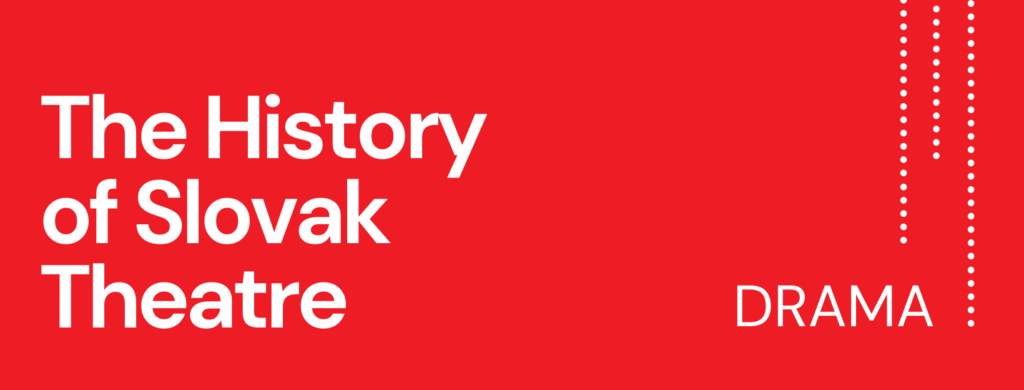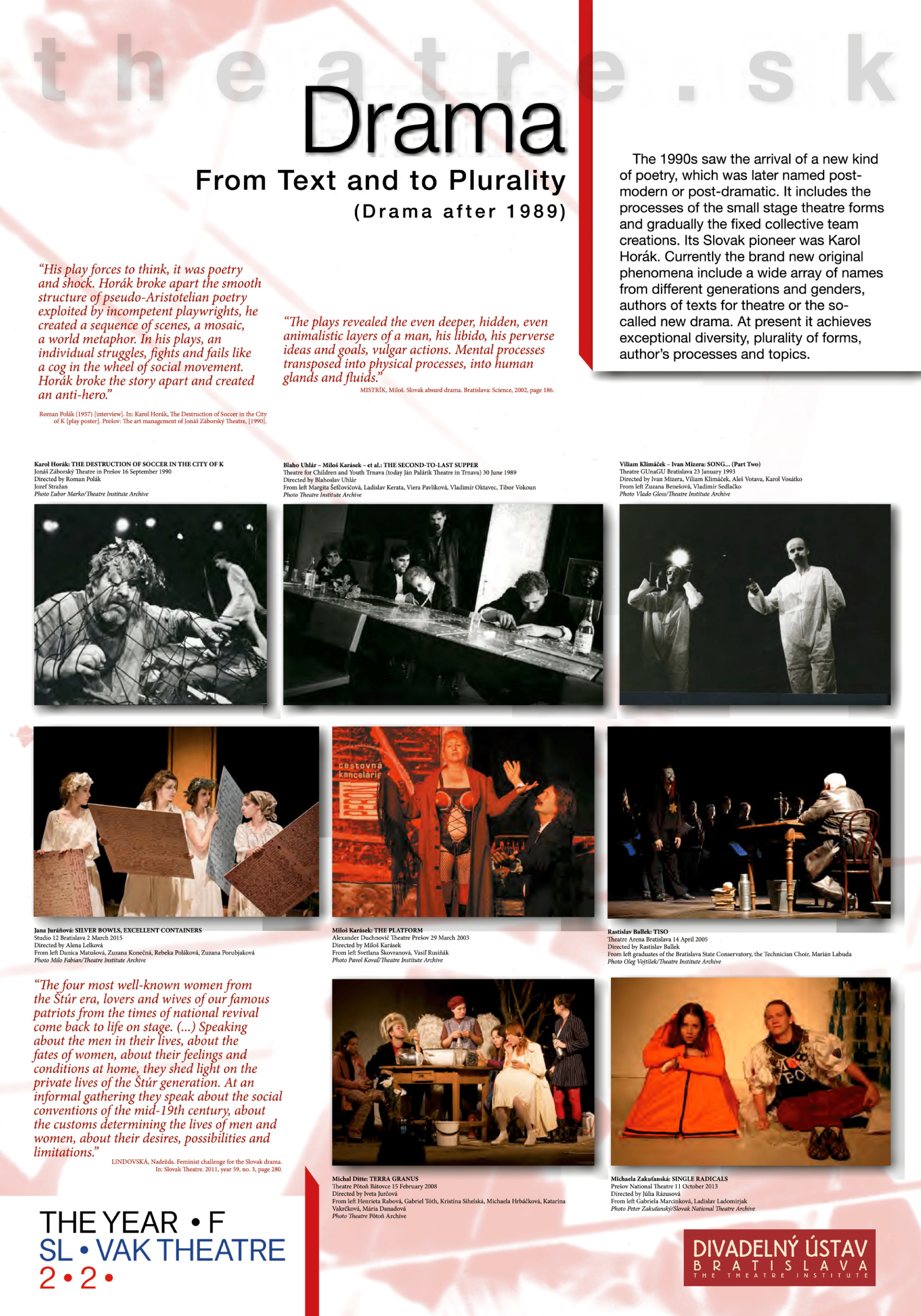
The History of Slovak Theatre – 6. Drama
Overcoming Realism (the 1940s – 1980s)
From the time of its emergence the Slovak drama experienced a not very long, but very rich journey. It was inspired by the European artistic directions as well as the domestic social and political life and the essence of theatre. The Slovak playwrights were unable to escape the trendy fashions and hazards that negatively influenced the form and quality of the plays. Just like the stories and heroes struggled with their own problems and external circumstances, the
Slovak drama underwent its own struggles – with more or less success. It left us with important messages about the human perceptions and sensitivity in the context of contemporary and civilizational changes.
“The trio of his plays The Scar, The Midnight Mass and Antigone and Others represent a milestone not only in his work, but also in the entire Slovak drama. At the turn of the 1950s, the Slovak and Czech dramatic works gradually started to distance themselves from the schematism of the 1950s and turned their attention from the building themes to the issue of a man in vortex of social changes. Karvaš’s dramas attracted attention as well as many controversial questions.”
KOVÁČ, Peter. The Midnight Mass. In: The Fighter. 7 August 2014, no. 16, pages 1 and 5.
“Individual characters are coming down from the top of the mountain to the semi-darkness of a local pub to tell us about themselves, about others, but also about us, how we lived in 1933, but else how we live and what stays with us. The multi-layered text reveals the lives of individuals who are carrying their bundles full of unhappiness, injustice, misery, hope, and through them the author paints the fate of this nation with all its characteristics – goodness, evil, envy, callousness, poverty.”
PODMAKOVÁ, Dagmar. Kováčik again, and about the man again. In: Pravda. 31 October 1995, year 5, no. 252, page 5.
From Text and to Plurality (Drama after 1989)
The 1990s saw the arrival of a new kind of poetry, which was later named post-modern or post-dramatic. It includes the processes of the small stage theatre forms and gradually the fixed collective team
creations. Its Slovak pioneer was Karel Horák. Currently the brand new original phenomena include a wide array of names from different generations and genders, authors of texts for theatre or the so-called new drama. At present it achieves exceptional diversity, plurality of forms, author’s processes and topics.
“His play forces to think, it was poetry and shock. Horák broke apart the smooth structure of pseudo-Aristotelian poetry exploited by incompetent playwrigts, he created a sequence of scenes, a mosaic, a world metaphor. In his plays, an individual struggles, fights and fails like a cog in the wheel of social movement. Horák broke the story apart and created an anti-hero.”
Roman Polák (1957) [interview]. In: Karol Horák, The Destruction of Soccer in the City of K [play poster]. Prešov: The art management of Jonáš Záborský Theatre, [1990].
“The plays revealed the even deeper, hidden, even animalistic layers of a man, his libido, his perverse ideas and goals, vulgar actions. Mental processes transposed into physical processes, into human glands and fluids.”
MISTRÍK, Miloš. Slovak absurd drama, Bratislava: Science, 2002, page 186.
“The four most well-known women from Štúr era, lovers and wives of our famous patriots from the times of national revival come back to life on stage. (…) Speaking about the men in their lives, about the fates of women, about their feelings and conditions at home, they shed light on the private lives of the Štúr generation. At an informal gathering they speak about the social conventions of the mid-19th century, about the customs determining the lives of men and women, about their desires, possibilities and limitations.”
LINDOVSKÁ, Nadežda. Feminist challenge for the Slovak drama. In: Slovak Theatre. 2011, year 59, no. 3, page 280.
This is an online version of exhibition theatre.sk.



